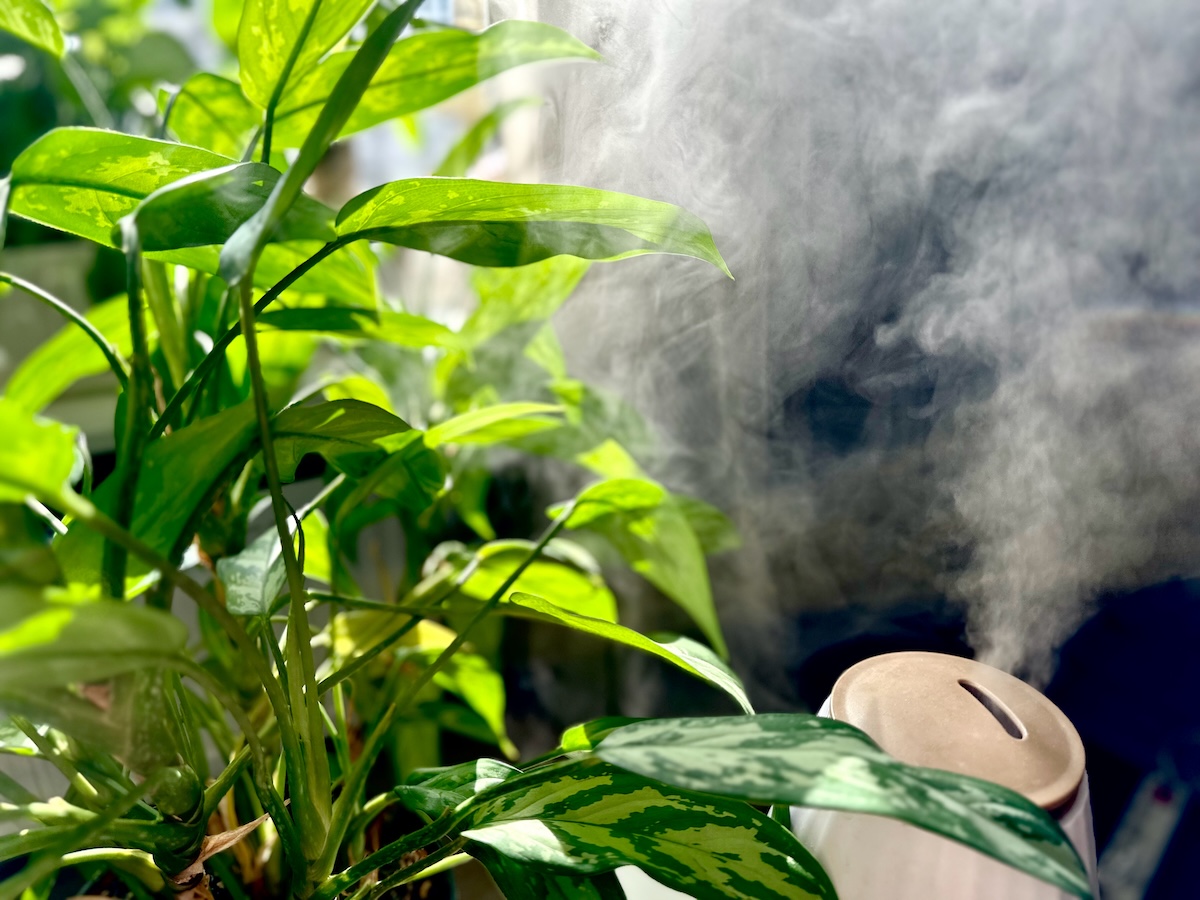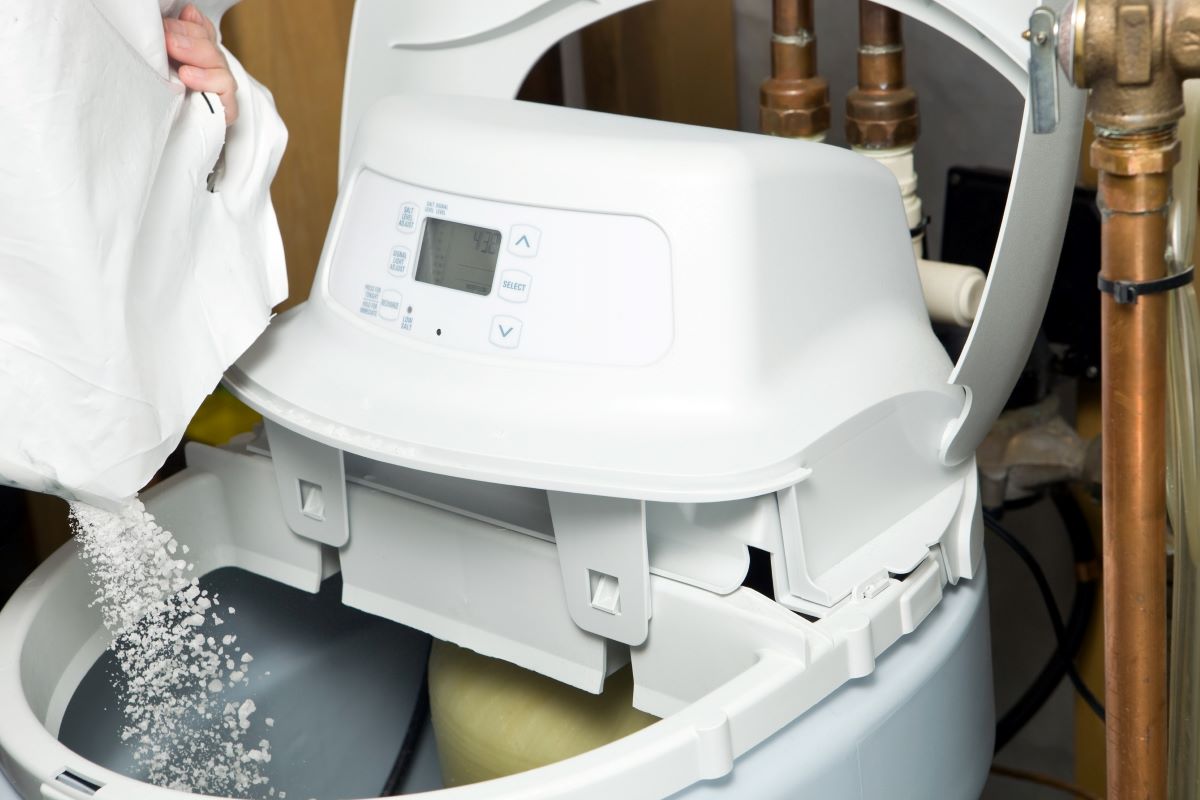We may earn revenue from the products available on this page and participate in affiliate programs. Learn More ›
Most plants can survive at temperatures and humidity levels similar to, or slightly higher than, those ideal for humans. Many houseplants thrive at relative humidity levels between 30 and 60 percent. There are exceptions both above and below these levels, depending on the plant species. If you are comfortable with your home’s temperature and humidity level, though, chances are your houseplants are doing OK.
However, ideal humidity levels are easier to achieve in regions with lots of rain and in summer. Once winter hits, indoor relative humidity levels can fall well below 30 percent. That is low even for many succulents, which need less watering but thrive best with a little moisture in the air. Cold winter air is inherently drier than warm air. Once your heater starts running, it removes some moisture and the air can feel even drier.
If plants don’t get enough humidity, they show signs such as brown tips and edges. Low humidity levels cause plants to lose water faster through transpiration (movement of water and nutrients up from roots to leaves). Even succulents can show signs like dry leaf edges or tips or shriveling and wrinkling when humidity is too low. When growing indoor plants native to subtropical or tropical regions, you’ll need to do even more to increase humidity around them, especially in winter. Below are several ideas for how to make sure your plants get the humidity they need, when they need it most.
1. Group your plants so they can help each other.
Plants actually add some humidity to the air as they transpire and as water evaporates from their soil. So, if you group several of your plants together at an ideal site, such as near a large window in a relatively small room, you can raise the amount of humidity around all of them.
Some plants transpire at faster rates, typically because they have large leaves and therefore a greater surface area for releasing water. An example is the peace lily (Spathiphyllum spp.). The Boston fern (Nephrolepis exaltata) has small leaves—but plenty of them!—and is another good bet for increasing humidity in a plant grouping. Succulents like Aloe vera have the opposite effect, and draw moisture from the air—and away from other plants.
2. Place your plants in steamy locations.
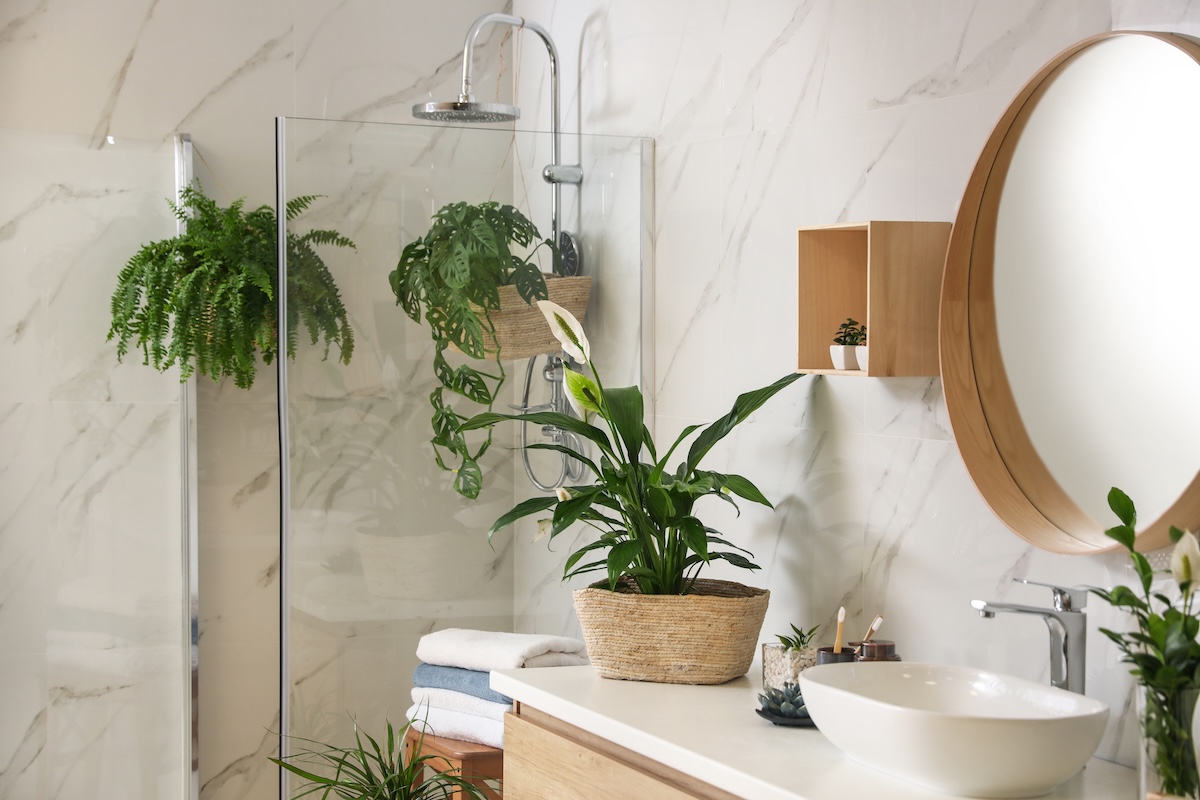
Some rooms in your home tend to be more humid than others due to the amount of water run in them. The bathroom naturally rates the highest, 898with its typically small size and the number of showers, baths, and hand-washings going on there. The kitchen generally comes in second with its steam from tea kettles, instant pots, and dishwashing.
Therefore, tropical species, which rate among the highest humidity-craving plants, probably will thrive best in the bathroom or even in the shower. Plants like ferns, pothos, and philodendrons also don’t require high levels of light. You can place a few orchids on a windowsill above the kitchen sink to take advantage of the vapor that rises from the running water. A room that contains a large number of plants, such as an attached sunroom or greenhouse, also should be more humid simply because of the plants’ presence.
3. Set potted plants atop humidity trays.
Fill a tray with pebbles to create a humidity tray. When you pour enough water to fill the tray to just below the surface of the pebbles, the water eventually evaporates. Plants placed atop the tray will benefit somewhat from the evaporation under the pot. The tray can double as a saucer to catch excess moisture from watering soil. Just be sure not to let the plant sit directly in water to avoid causing root rot. You can gather a small group of orchids or other plants on one humidity tray or repurpose 2- to 3- inch deep container saucers or dishes and add decorative gravel to improve the appearance.
4. Run a humidifier.
Humidifiers seem like the obvious solution to indoor dryness and range in size from a small room humidifier to a whole-house humidifier. You can even set a desired humidity level on many of these appliances to accommodate plants’ needs and avoid adding too much moisture to the air. If you have trouble assessing and controlling indoor humidity, a hygrometer can help.
Just note that humidifiers occasionally cause more problems than they solve. If you add hard water to an ultrasonic humidifier, it will deposit a white film on nearby surfaces. Yet buying bottled water to fill a humidifier can soon grow prohibitively expensive. If you fail to clean and disinfect a humidifier regularly, it could spread dangerous mold and bacteria along with water vapor.
5. Mist your plants.
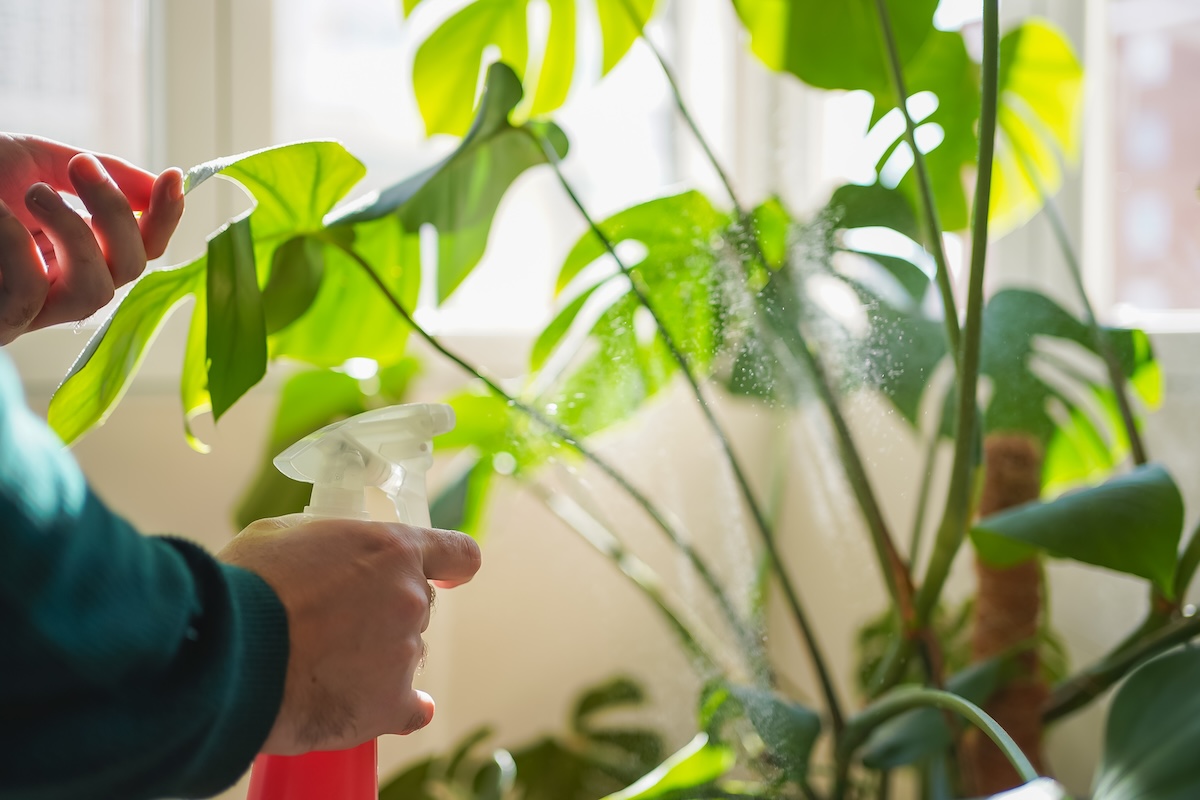
Although spraying a fine mist of water daily onto plants or into the air above them won’t raise the humidity levels around plants for long, most seem to appreciate it. As the closest thing to dew or rain that they can get indoors, mist also helps prevent dust from building up on plant leaves. It is especially helpful for potted plants you bring indoors for the winter.
Though misting plants is an easy enough task to accomplish, you’ll want to follow these best practices for best results: Opt for bottled or distilled water; hard water can cause spotting on plants. Ensure that the water is at room temperature, not cold. Finally, avoid misting plants that have fuzzy foliage (like African violets), since their leaves will retain that moisture and spot, or even possibly rot, as a consequence.
6. Add a water feature to the space.
An indoor water fountain or similar water feature can recycle the same water over a few days, and might also work as a sort of natural humidifier for plants. How? A fountain can add water vapor to the air, which evaporates as dry air absorbs it. Placing a tabletop fountain or a small aquarium among a grouping of greenery can bring calm, soothing sounds—and a humid, rainforest-y touch to your room.
7. Place plants in a terrarium.
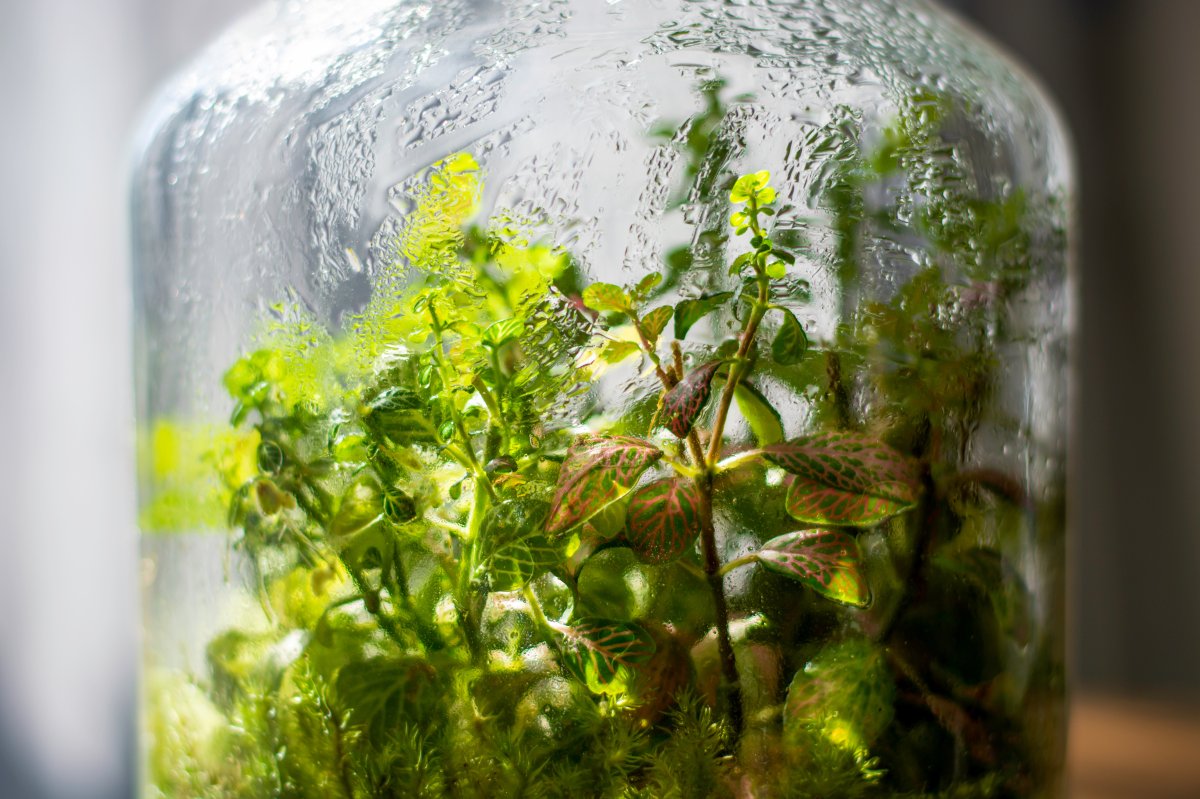
If you have trouble maintaining the ideal indoor humidity, you can help plants by growing them in terrariums, aquariums, or under cloches—even an open terrarium can raise humidity around plants. (Recyclers and upcyclers: Inverting clear food plastic containers over small plants can increase humidity but let light in.) Remember to open the cloche or terrarium occasionally (often every 2 to 3 weeks) for a few hours to circulate air and prevent disease.
Humidity tents create a similar effect for large plants or groupings. Though you can purchase humidity tents that will cover several plants on a tabletop or floor, you can DIY one too:
Surround a plant stand with plastic curtains, for example, and close them in the evening to keep the plants from drying out.
8. Divide and situate plants based on their needs.
Although grouping plants that transpire more can increase humidity to those plants, it’s generally a smart idea to divide larger or diverse plant collections based on their watering and humidity needs. Tropical plants can all go together in areas with higher humidity; succulents and other plants that thrive in drier climates can be in another space, perhaps in a below-grade bedroom.
Another benefit of keeping like plants with like is that they’re easier to maintain that way. You may forget to water a tropical plant if it’s in a room on its own; keep it with other plants you have to water every day and it’ll get the attention it needs. Aim to place similarly sized plants or containers together, too, since you’ll likely have to water and fertilize them at the same intervals. Finally, ensure plants are not crowded too closely; even tropical houseplants need some air circulation.
Final Thoughts
The best ways to increase humidity for plants depend on the needs of the particular plants in your collection. Factors such as light and temperature can affect houseplants as much as humidity, especially in winter, which is why determining why a plant is unhappy can sometimes feel like a Choose Your Own Adventure game: To save the plant, Should you whip out your misting bottle or turn on the grow light?
Even if your attempts to reach the optimal humidity aren’t successful, don’t assume that will doom all your plants. Those with the thinnest or narrowest leaves usually suffer most, so do your best to add humidity or mist for those. Many plants begin to perk up once spring arrives and indoor temperatures and humidity rise.
The post How to Increase Humidity for Houseplants, Even During the Driest Days of Winter appeared first on Bob Vila.
